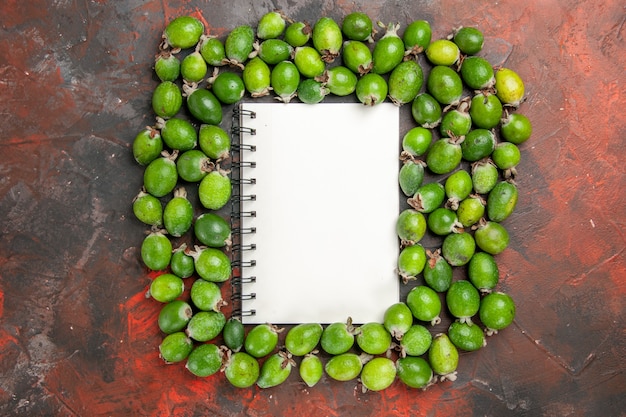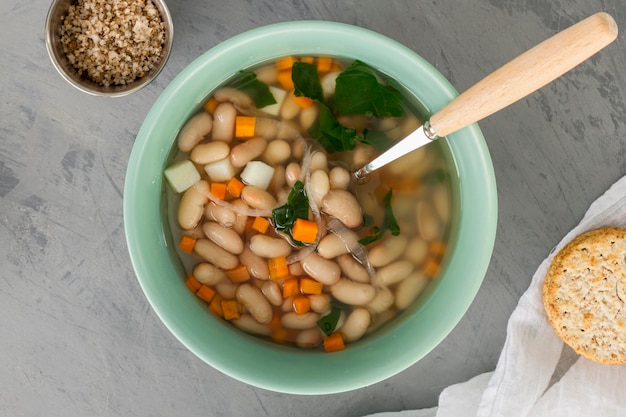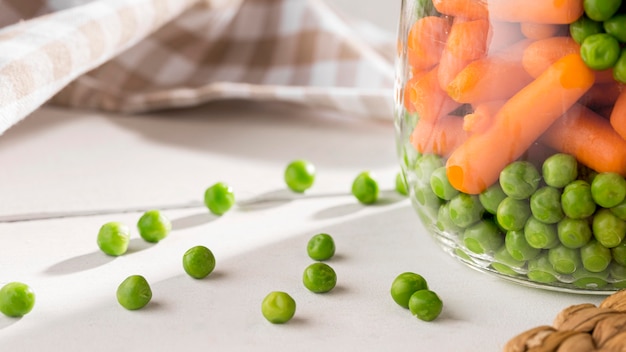You've seen them on restaurant menus, maybe even spotted them in the supermarket, but you're still wondering: what exactly are edamame beans, and how do you cook them? Well, let me tell you, you're in for a treat! Edamame, also known as soybeans in their pods, are a fantastically delicious and versatile ingredient. They're brimming with protein, fiber, and essential vitamins and minerals, making them a healthy choice too.
I remember my first encounter with edamame. I was a bit clueless – what on earth do you do with these green pods? Do you eat the whole thing? Do you peel them? Thankfully, I've learned a thing or two since then, and I'm here to guide you through the process of cooking perfect edamame beans. I'll share all my tips and tricks so you can impress your friends with your newfound edamame expertise.
In this comprehensive guide, we'll explore the world of edamame, from selecting the freshest pods to mastering the art of steaming, boiling, and seasoning. So, grab your favorite beverage, get cozy, and let's get started!
(Part 1) Picking the Perfect Edamame

Before you even think about cooking, you need to choose the right edamame. The key is finding those plump, vibrant pods that scream "freshness." Here's how to pick the best edamame:
1. Look for Vibrant Green Pods
The color is your first clue! The pods should be a vibrant, almost emerald green. Avoid any that look dull, yellowed, or brown, as these are likely older and not as fresh. The bright green color is a sign that they're packed with flavor.
2. Feel for Firmness
Give those pods a gentle squeeze. They should feel firm and springy to the touch, not squishy or limp. This indicates that the beans inside are plump and juicy. If the pods feel too hard, they might be over-mature.
3. Check for Damage and Bruises
Give the pods a quick scan for any signs of damage, like cracks, bruises, or holes. These blemishes can harbor bacteria and spoil the beans. It's always better to choose pods that are blemish-free.
4. Go for Pods with Fuzzy Tips
This might seem a bit odd, but those fuzzy tips on the end of the pods are a good indicator of freshness. The fuzziness is a natural part of the bean, and it should be slightly damp to the touch. If the fuzz is dry and brittle, the beans might be past their prime.
5. Don't Be Afraid to Ask for Help
If you're unsure, don't hesitate to ask the person at the market or in the supermarket for their advice. They'll be happy to help you choose the best edamame.
(Part 2) Getting Ready to Cook

You've got your perfect edamame, so let's get those beans ready for their transformation. Don't worry, this part is super quick and easy. Just follow these steps:
1. Wash Thoroughly
Rinse the edamame pods thoroughly under cold running water. This will remove any dirt or debris that might be clinging to them. Gently scrub the pods with your hands to make sure they're clean.
2. Trim the Ends
This step is crucial. Take a sharp knife and trim off the ends of each pod. This helps the beans cook evenly and allows the flavor to seep in. You don't need to be super precise; just a little trim will do.
3. Decide on Your Cooking Method
Now it's time to decide how you want to cook your edamame. Do you prefer steaming for a delicate flavor or boiling for a more robust taste? Don't worry, we'll cover both methods in detail later.
(Part 3) Steaming to Perfection

I'll be honest, steaming is my personal favorite way to cook edamame. It's gentle, preserves the beans' natural flavor, and results in a beautifully vibrant green color. Here's how to steam edamame like a pro:
1. Fill a Steamer Basket
Place your cleaned and trimmed edamame pods into a steamer basket, making sure there's enough room for the steam to circulate. You don't want them crammed in like sardines.
2. Choose the Right Water Level
Fill the bottom of your steamer pot with water, ensuring it doesn't reach the level of the steamer basket. You only need enough water to create steam, not a swimming pool for your edamame.
3. Bring it to a Boil
Place the steamer pot on the stovetop and bring the water to a rolling boil. This is where the steam magic begins.
4. Steam to Perfection
Once the water boils, carefully place the steamer basket with the edamame pods on top of the pot. Cover the pot tightly with the lid and steam for about 5-7 minutes. The beans are ready when they are tender and bright green.
5. Test for Doneness
To check if the beans are cooked through, take one pod out of the steamer basket and gently squeeze it. The beans should be soft and easily release from the pods. If the beans are still firm, steam them for a few more minutes.
(Part 4) Boiling for Bold Flavour
Now, if you're looking for a slightly bolder flavor, boiling is a great option. It allows the water to infuse the beans with a bit more intensity. Here's how to boil edamame to perfection:
1. Fill a Pot with Water
Fill a large pot with enough water to cover the edamame pods by at least an inch. Don't skimp on the water, it needs to be generous!
2. Bring the Water to a Boil
Place the pot on the stovetop and bring the water to a rolling boil. You'll know it's ready when you see those little bubbles vigorously rising to the surface.
3. Add the Edamame
Once the water is boiling, gently add the cleaned and trimmed edamame pods to the pot. Avoid adding them all at once, as this can cool the water down too quickly.
4. Boil for the Right Time
Let the edamame boil for about 5-7 minutes, or until they are tender and bright green. Remember, you can always add a few more minutes if they need a bit longer.
5. Check for Doneness
To test if the edamame is cooked through, take one pod out of the boiling water and gently squeeze it. The beans should be soft and easily release from the pods. If the beans are still firm, boil them for a few more minutes.
(Part 5) Draining and Serving
Whether you've steamed or boiled, it's time to get those edamame out of the pot and ready for some deliciousness. Here's how to drain and serve:
1. Drain the Water
After your chosen cooking time, use a slotted spoon or a colander to drain the edamame pods from the water. Give them a good shake to remove any excess water.
2. Serve Hot or Cold
Edamame beans can be enjoyed hot or cold. If you're serving them hot, simply transfer them to a serving bowl. If you prefer them cold, let them cool down to room temperature before serving.
3. Add a Sprinkle of Salt
A sprinkle of sea salt is all you need to enhance the natural flavour of edamame. If you're feeling adventurous, you can also add a pinch of your favourite spices, such as paprika, chili flakes, or garlic powder.
4. Enjoy!
There you have it, perfectly cooked edamame beans. Now it's time to enjoy them!
(Part 6) Edamame on the Go
I know what you're thinking: "Edamame sounds great, but I'm always on the go. Is there a quick and easy way to enjoy them?" Well, you're in luck! Edamame is perfect for a quick snack or a healthy addition to your lunch or dinner. Here are some ideas for edamame on the go:
1. Pre-Cooked Edamame
You can buy pre-cooked edamame at most supermarkets. They come in handy pouches that are perfect for a quick and easy snack. Just pop them in the fridge for a few minutes to cool down, and you're ready to go.
2. Edamame Salad
Add cooked edamame to a salad for a boost of protein and a delightful crunch. Combine them with your favourite veggies, such as lettuce, cucumbers, and tomatoes, and toss them in a light vinaigrette. You can even add some crumbled feta cheese for extra flavour.
3. Edamame Wraps
Wrap cooked edamame in a tortilla or a lettuce leaf, along with other fillings like hummus, avocado, and roasted vegetables. It's a filling and nutritious lunch or dinner option.
(Part 7) Edamame Adventures
Now that you've mastered the basics, let's explore some creative ways to use edamame. These little beans can be more than just a side dish; they can be stars of the show. Here are some ideas to get your culinary juices flowing:
1. Edamame Hummus
Combine cooked edamame with tahini, lemon juice, garlic, and olive oil for a unique and delicious hummus. It's perfect for dipping vegetables, spreading on sandwiches, or using as a sauce for wraps.
2. Edamame Pesto
Blend cooked edamame with basil, pine nuts, Parmesan cheese, garlic, and olive oil for a vibrant and flavourful pesto. Use it as a topping for pasta, grilled chicken, or fish, or spread it on toast.
3. Edamame Dip
Mix cooked edamame with cream cheese, sour cream, and a little bit of spice for a creamy and satisfying dip. Serve it with crackers, tortilla chips, or vegetable sticks.
4. Edamame Salad with Ginger Dressing
Combine cooked edamame with shredded carrots, cucumber, and red onion. Toss it with a ginger-soy dressing. It's a refreshing and flavourful salad that's perfect for a light lunch or a side dish.
(Part 8) FAQs: Your Edamame Questions Answered
I've put together a list of frequently asked questions about edamame, so you can become a true edamame expert.
1. Can I Freeze Edamame?
Absolutely! You can freeze cooked edamame. Simply let them cool down completely and place them in an airtight container or freezer bag. They'll keep well in the freezer for up to 3 months. To use frozen edamame, simply defrost them overnight in the fridge or microwave them for a few minutes until thawed.
2. What if My Edamame Pods Are Too Hard?
If your edamame pods are too hard, you can still cook them, but they might not be as tender. You'll need to increase the cooking time. For steaming, add another 2-3 minutes, and for boiling, add another 3-4 minutes. Keep checking them until they are tender.
3. What If I Don't Have a Steamer?
No worries! You can still cook edamame without a steamer. Simply boil them in a pot of water. Make sure to use a large pot and enough water to cover the pods.
4. What are Some Other Ways to Season Edamame?
Besides salt, you can season edamame with various spices and seasonings. Here are a few ideas:
- Chili flakes
- Garlic powder
- Onion powder
- Paprika
- Sesame seeds
- Toasted sesame oil
- Lemon juice
- Soy sauce
- Sriracha
- Black pepper
5. Are Edamame Good for You?
Yes, edamame is packed with nutrients and is considered a good source of protein, fiber, and essential vitamins and minerals, such as folate, magnesium, and potassium.
(Part 9) Edamame for Everyone
Whether you're a seasoned foodie or a newbie in the kitchen, edamame is a delicious and versatile ingredient that's easy to cook and enjoy. So, what are you waiting for? Go grab some fresh edamame pods, and get ready to embark on a delicious adventure!
(Part 10) Edamame: A nutritional powerhouse
Edamame is more than just a tasty snack; it's a nutritional powerhouse that deserves a place in your diet. Here's a quick rundown of its nutritional benefits:
1. Packed with Protein
Edamame is a great source of plant-based protein, providing about 17 grams of protein per cup. Protein is essential for building and repairing tissues, maintaining muscle mass, and supporting a healthy immune system.
2. Rich in Fiber
Fiber is another essential nutrient found in abundance in edamame. Fiber helps regulate digestion, keeps you feeling full, and can help lower cholesterol levels.
3. A Good Source of Vitamins and Minerals
Edamame is a good source of various vitamins and minerals, including folate, magnesium, potassium, iron, and vitamin K. These nutrients play crucial roles in maintaining overall health and wellbeing.
4. May Help Lower Cholesterol
Studies have shown that consuming soy products, like edamame, may help lower cholesterol levels.
5. May Help Improve Heart Health
The fiber, protein, and antioxidants found in edamame may contribute to improved heart health.
6. May Help Manage Blood Sugar
The fiber in edamame can help slow down the absorption of sugar into the bloodstream, which can be beneficial for managing blood sugar levels.
7. A Good Choice for Vegetarians and Vegans
Edamame is a great plant-based protein source, making it a valuable addition to vegetarian and vegan diets.
(Part 11) Edamame: A culinary adventure
Edamame is a versatile ingredient that can be incorporated into various dishes, from simple snacks to elaborate meals. It's a culinary adventure waiting to be explored!
1. Edamame in Asian Cuisine
Edamame is a staple in many Asian cuisines. It's often served as a side dish, appetizer, or ingredient in stir-fries, salads, and noodle dishes. In Japan, edamame is often served with a sprinkle of salt and a squeeze of lemon, and it's a popular bar snack.
2. Edamame in Western Cuisine
Edamame is gaining popularity in Western cuisine as well. It's often used as a protein source in salads, bowls, and wraps. It also makes a great addition to soups, stews, and pasta dishes.
3. Edamame in Vegan and vegetarian dishes
Edamame is a great protein source for vegetarians and vegans. It can be used in various dishes, from tofu scramble to veggie burgers.
4. Edamame for Weight Management
The fiber and protein in edamame can help you feel full and satisfied, making it a good choice for weight management.
(Part 12) Edamame: From Farm to Table
From the fields of Japan to the supermarket shelves, edamame has become a global culinary phenomenon. Its journey from farm to table is a testament to its popularity and versatility.
1. Growing Edamame
Edamame is a legume that grows in pods on a vine. It's typically grown in warm climates with plenty of sunlight.
2. Harvesting Edamame
Edamame pods are harvested when they are still young and tender. They are typically picked by hand and then transported to processing facilities.
3. Processing Edamame
Edamame pods are often frozen or canned after harvesting to preserve their freshness and extend their shelf life.
4. Edamame in the Supermarket
You can find fresh, frozen, or canned edamame in most supermarkets. Look for pods that are bright green and firm to the touch.
5. Edamame: A Global Trend
Edamame has become a global trend, enjoyed by people of all ages and backgrounds. Its versatility, nutritional benefits, and delicious flavour have made it a popular choice for healthy eating.
(Part 13) Beyond the Basics
Now that you've learned the basics of selecting, cooking, and enjoying edamame, let's delve a little deeper. Here are some additional tips and ideas to enhance your edamame experience:
1. Flavor Variations
While a sprinkle of salt is the classic way to season edamame, don't be afraid to get creative. Experiment with different spices and seasonings to find your perfect combination. Consider using:
- Spicy: Chili flakes, sriracha, cayenne pepper
- Savory: Garlic powder, onion powder, black pepper
- Earthy: Smoked paprika, cumin, oregano
- Citrusy: Lemon juice, lime juice
- Sweet and Savory: Honey, maple syrup, sesame seeds
2. Edamame in Recipes
Edamame isn't just a snack; it's a versatile ingredient that can add protein, fiber, and a unique flavor to various recipes. Here are some ideas:
- Soup: Add cooked edamame to miso soup, vegetable soup, or lentil soup for a boost of protein and texture.
- Stir-Fries: Toss cooked edamame into your favorite stir-fry for a nutritious and flavorful addition.
- pasta dishes: Combine cooked edamame with pasta, pesto, and cherry tomatoes for a simple and satisfying meal.
- Quesadillas: Add cooked edamame to your favorite quesadilla fillings for a protein boost.
- Smoothies: Blend cooked edamame into smoothies for a secret source of protein and fiber.
3. Edamame Etiquette
While edamame is a delicious and versatile food, there are a few etiquette tips to keep in mind:
- Shelling Technique: It's common to eat edamame by hand, squeezing the beans out of the pods. Use your teeth to bite off the end of the pod and then pop the beans into your mouth.
- The Salt Bowl: When served as a bar snack, edamame is usually accompanied by a small bowl of salt. Dip the pods into the salt before eating them.
- Pod Etiquette: While it's common to eat the beans and discard the pods, some people prefer to eat the whole pod, including the soft outer shell. It's all about personal preference.
(Part 14) Edamame: A Taste of the Future
Edamame is more than just a trendy food; it's a sustainable and nutritious choice for the future. With its high protein content and versatility, edamame is poised to become an even more integral part of our diets.
So, as you enjoy your next plate of edamame, think about the journey these beans have taken – from the farm to your table – and the potential they hold for a healthier and more sustainable future. Edamame is a taste of the future, a delicious and nutritious ingredient that can be enjoyed by people of all ages and backgrounds.
And who knows? Perhaps someday, edamame will be as ubiquitous as pizza or pasta, enjoyed by millions around the world. The future of edamame is bright, and I, for one, am excited to see where this culinary adventure takes us.
Everyone is watching

Corn on the Cob: The Ultimate Guide to Perfectly Cooked Ears
Healthy MealsAh, corn on the cob. Just the name evokes images of sunny days, barbecues, and that sweet, juicy flavour that ...

Scallops: The Ultimate Guide to Perfect Cooking
Healthy MealsAh, scallops. Those delicate, sweet, and utterly delicious morsels of the sea. They hold a special place in my...

Spaghetti Squash: The Ultimate Guide to Cooking and Serving
Healthy MealsRemember that time you saw spaghetti squash at the supermarket, looking all bumpy and strange, and thought, "W...

Salmon Cooking Times: Perfect Guide for Every Recipe
Healthy MealsLet me tell you, cooking salmon is an art form. It's all about getting that perfect balance: juicy and tender,...

Wolf Meat Cooking Guide: Recipes and Tips
Healthy MealsSo, you're curious about wolf meat, eh? It's not your everyday supermarket find, that's for sure. But let me ...
